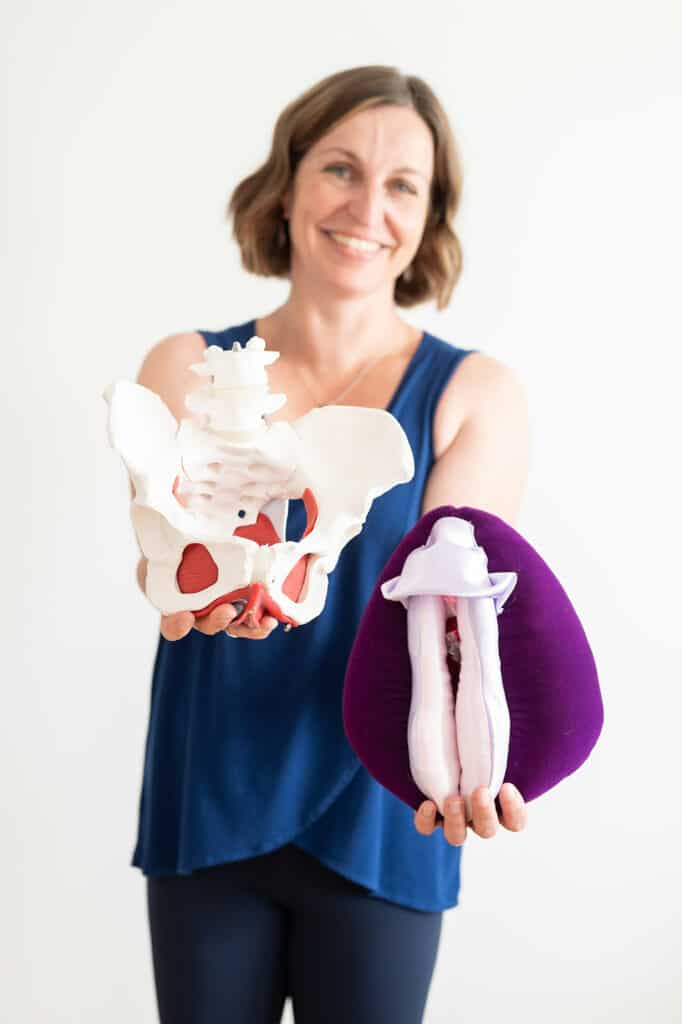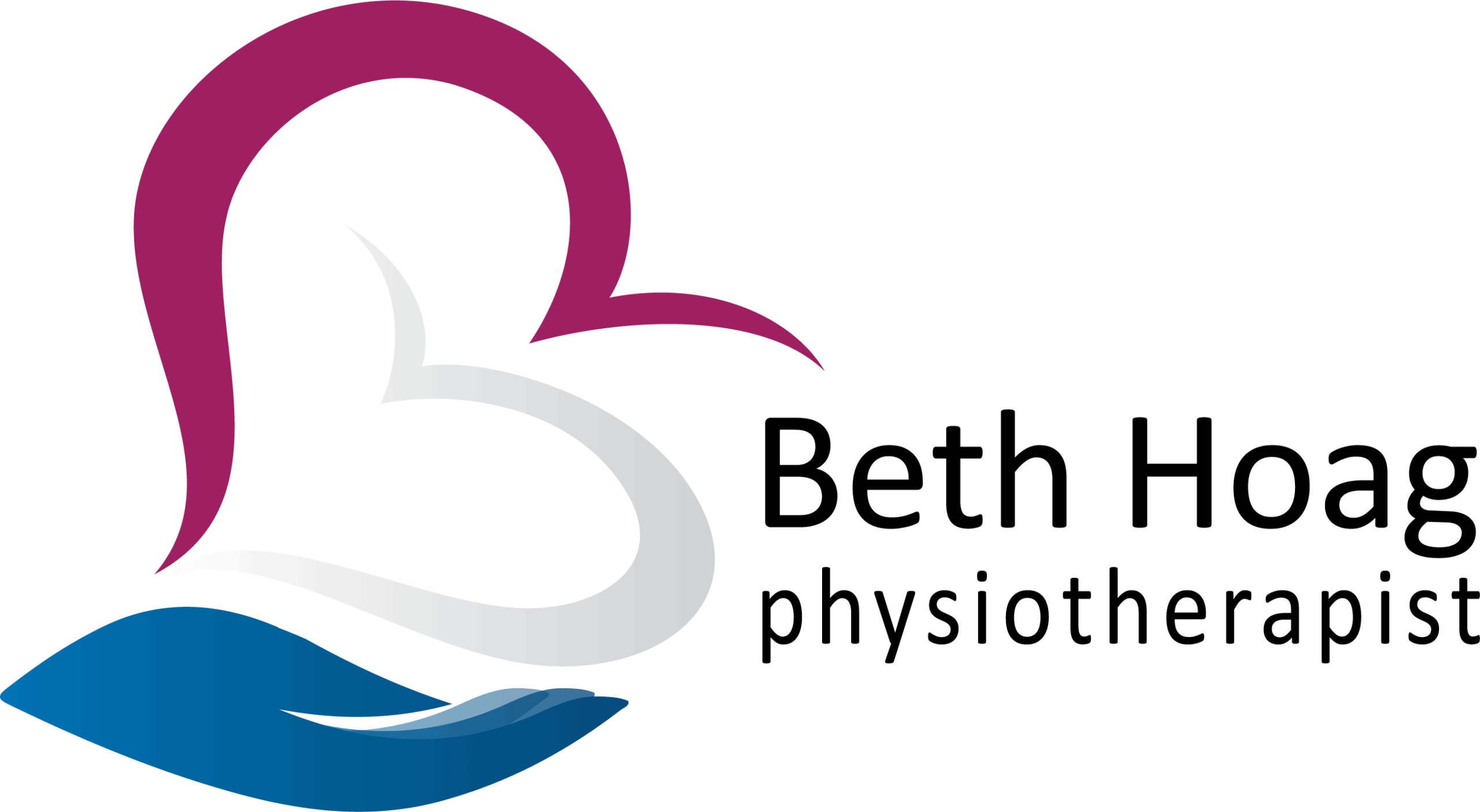Pelvic Health Physiotherapy
During and After Cancer Treatment

Pelvic Health During & After Cancer
Nearly 50% of people diagnosed with cancer may experience pelvic health problems as a result of cancer or cancer treatment. Cancers of the breast and pelvis (uterine, ovarian, cervical, vulvar, bladder, colorectal, and prostate) can impact pelvic health and significantly disrupt quality of life.
Thankfully many pelvic health problems can be improved or resolved by working with a physiotherapist who is trained in cancer rehab and pelvic health.
How Does Cancer Impact Pelvic Health?
Pelvic health can be impacted either directly from cancer or indirectly from the side effects of cancer treatment (surgery, radiation, chemotherapy, hormone therapy). These problems can be short-lasting but are more commonly long-term issues that can get worse over time and negatively impact your quality of life.
Common pelvic health problems related to cancer include:
- Pelvic pain
- Vaginal dryness
- Vaginal stenosis (narrowing of the vaginal canal)
- Sexual dysfunction (e.g. pain with sex, low libido)
- Recurrent urinary tract infections (UTIs)
- Genitourinary Syndrome of Menopause (GSM)
- Urinary incontinence (leaking)
- Urinary urgency (strong urges to void)
- Increased urinary frequency (needing to void more frequently)
- Constipation or diarrhea
- Bowel urgency
- Bowel incontinence
Pelvic Health Physiotherapy with Beth Hoag; Specialized Care
There is strong evidence to support the role of pelvic floor physiotherapy as a part of cancer rehabilitation services*. However despite this, many people impacted by cancer still do not receive the pelvic rehab support they need.
Recognizing this enormous gap in specialized care, Beth is uniquely trained and experienced to address the cancer-specific pelvic health needs of her clients. In addition to providing direct client care, Beth also teaches other physiotherapists these skills so that this specialized care can become more widely available across the country.

Working with Beth; What to Expect
Understanding that pelvic health issues are often sensitive in nature, Beth is committed to providing a space where you feel safe, comfortable, and heard. This includes a private and professional setting with ample time for you to ask questions.
Pelvic health physiotherapy with Beth may include:
- Education
- Hands-on techniques
- Breathing, relaxation, and meditation techniques
- Postural and ergonomic instruction
- Exercises to increase the body-mind connection with your pelvic floor
- Education on the use of vaginal lubricants, moisturizers, and other tools
- Basic dietary modification advice
Pelvic Health Physiotherapy Pathways
Comprehensive In-Person & Online Options
Virtual One-on-One Physiotherapy
Your virtual video appointments will be booked specifically with me. Treatments are personalized to your specific needs to improve your well-being and quality of life. (Available to residents of Ontario, Canada only)
In-Person One-on-One Physiotherapy
Your in-person appointments will be booked specifically with me. Treatments are personalized to your specific needs to improve your wellbeing and quality of life.
The Cancer Rehab Physio Experience
What people are saying
"Your online program and exercises were a game changer for my recovery; the overall content of the [Breast Cancer Recovery Program] is amazing. I wish I had had it when I was first diagnosed. It would have alleviated a lot of anxiety and questions."
Kelly
Diagnosed with Breast Cancer
“Thank you for being such a wonderful healer in my life in my darkest days. Not only are you tremendously skilled but you are a gem of a human being whose presence soothed and encouraged me each and every time I saw you. I feel so fortunate to have had you walk with me through the muck...”
Kim
Diagnosed with Breast Cancer
“I was thinking about [Beth] and the work [she does] and [has] done for me. I was hiking in the Gatineau and enjoying the moment. Body in motion, mind somewhat still. Thank you for your expert advice and positive attitude. You were teaching me how to give myself a bit more grace. Your videos of me doing the exercises and your excitement when I made progress helped so much! I am grateful.”
Christina
Diagnosed with Melanoma
"Beth has provided suggestions and treatment that have increased the range of movement of both arms, but even more significantly, made them feel like arms again so that I can participate in normal activities (eg. dragon boating) and be pain free. In the spirit of the body being "connected", Beth's intelligent approach results in improvements in whole body wellness, which she teaches the patient to maintain."
Ann
Diagnosed with Breast Cancer
Pelvic Health Physio FAQs
While all pelvic health physiotherapists are trained to assess and treat common pelvic floor problems, the unique needs of people impacted by cancer is not part of this training. In addition, many pelvic health problems are related to issues elsewhere in the body, but this link is often missed. In other words, effectively supporting the unique pelvic health needs after cancer requires a special set of skills, training and experience.
My combined experience and insight from 2 decades of orthopedic physio, cancer rehab since 2008, and pelvic health training uniquely positions me to quickly identify common patterns and problems, making our work together efficient, empowering and effective.
Treatment for estrogen-sensitive cancers, such as ovarian, endometrial and some forms of breast cancer, will often aim to induce menopause. These treatments can include surgery to remove your ovaries (oophorectomy) and/or medications to stop or lower the amount of estrogen your body produces (e.g. chemotherapy and hormone therapy.)
Pelvic health can be dramatically impacted by treatment-induced menopause (also called chemical-menopause or surgical-menopause.) This can include vaginal dryness, pelvic pain and itching, pain with intercourse, low libido, urinary incontinence, frequent urinary tract infections (UTIs), and pelvic organ prolapse. Pelvic health physiotherapy can significantly improve your symptoms.
Absolutely yes! Although seemingly removed from the pelvic region, breast cancer treatment has been linked to long-term pelvic health issues. There are several reasons why this is the case, but the primary reason is related to the onset of menopause caused directly by chemotherapy, hormonal therapy (Tamoxifen and Aromatase Inhibitors), and ovarian suppression. Other reasons for pelvic problems after breast cancer can include movement changes in the ribs and torso and breast reconstruction (especially the DIEP procedure – Deep Inferior Epigastric Artery Perforator.)
There are multiple reasons why urinary incontinence can happen. In certain situations, kegels can be a helpful component of treatment, but studies have shown that many people perform kegels incorrectly without proper instruction. There are also situations where kegels can actually make things worse. As a result, a pelvic physio assessment is helpful to accurately identify the specific cause of your urinary incontinence, and thus the most effective treatment approach.
Yes! Vaginal stenosis is a common long-term side effect of pelvic radiation therapy, and the use of vaginal dilators is an important component of an overall treatment strategy to minimize the impact. Though many healthcare teams are great at providing patients with a free dilator and some basic instructions, there is a lot more we can do to make this both more comfortable and more effective.
Through our work together, we’ll explore better products we can use, additional treatment techniques, and we’ll address other factors that may be contributing to tightness and restrictions in your pelvic floor.
Our first appointment together will be an hour in length and will consist of 3 parts:
1) A Conversation: We will take time to review your health history, for you to share your story and treatment goals, and to discuss the components of the pelvic floor exam.
2a) External Assessment: We will go through a whole-body physical scan to identify any external factors which may be contributing to your pelvic health problem(s).
2b) Internal Assessment: Here we will examine the pelvic floor muscles, tissues and function through an internal exam (vaginal and/or rectal.) You will be fully covered with a sheet and I will explain everything as we go along so you feel as comfortable as possible. You may ask to stop the internal exam at any point in time and you may also have someone in the room with you for the exam, if you wish.
3) Treatment Planning: We will discuss what is causing your specific issue(s) and the best approach to resolving/managing this. We will also discuss how frequently we should see each other and what you can expect in terms of progress. Finally, you will leave your first appointment with 1-2 things to begin working until our next appointment.
Still Wondering If Pelvic Health After Cancer Is Right For You?
Learn More
Pelvic Radiation Therapy Side Effects
Surgery Recovery
Radiation Fibrosis
Understand Cellulitis
Our Latest Posts
Self-Massage for Constipation: The “I Love You” Technique
Managing constipation during cancer treatment can be challenging, but self-care...
Read MoreHow to Manage Constipation During Chemotherapy
Are you feeling a little “blocked up” from chemotherapy? Constipation...
Read More3 Things to Improve Hip & Low Back Stiffness After Pelvic Radiation Therapy
Pelvic radiation therapy can lead to stiffness and discomfort in...
Read MoreSelf-Massage for Constipation: The “I Love You” Technique
Managing constipation during cancer treatment can be challenging, but self-care...
How to Manage Constipation During Chemotherapy
Are you feeling a little “blocked up” from chemotherapy? Constipation...
3 Things to Improve Hip & Low Back Stiffness After Pelvic Radiation Therapy
Pelvic radiation therapy can lead to stiffness and discomfort in...
Hip and Low Back Stiffness (and Pain): A Side Effect of Pelvic Radiation Therapy
Have you had pelvic radiation for cancer treatment and are...








